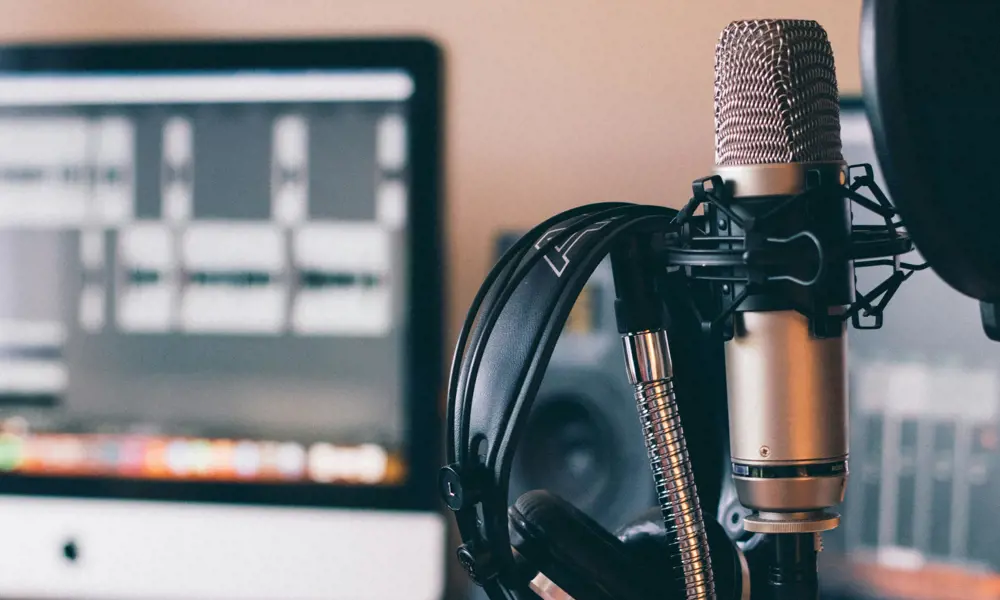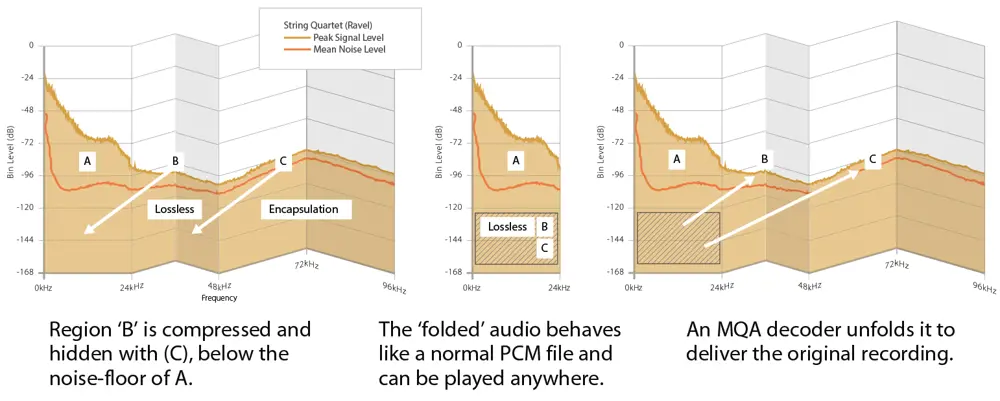
How does MQA technology work?
How we listen to music has transformed significantly over the years: now most of us can access songs whenever and wherever we want to listen to them. In general, downloaded audio or streaming services offer listeners standard, compressed files that weren’t produced by the artist themselves but created by third parties from studio quality master digital files, often leading to inaccurate representations of the audio.
Launched in 2015, Master Quality Authenticated (MQA) digitally captures and stores original master recordings as files that are small and convenient enough to download or stream. It captures archives efficiently, distributes music with the highest possible sound quality and then optimises it for each playback device. This end-to-end system removes unintended artefacts of the technology employed in real-world recording, distribution and playback.
Although commonplace, converting audio to digital (and back) is imperfect and can limit sound quality. Conventional digital (PCM) is convenient for signal processing but inefficient for storing audio information. For example, lossless compression – which allows the original data to be reconstructed – can store an archive of CD audio in half the space, at an average data rate of 750kbps. However, when higher sampling rates and more bits are used to improve resolution, the PCM file becomes unwieldy. It can represent sounds that are quieter than atmospheric noise or at inaudibly high frequencies. With high resolution, the appropriate audio information captured can increase to around 1Mbps, but a lossless file may use 5 to 10Mbps to deliver it, violating a key engineering principle that the channel capacity should match the signal.

The graph shows the information capacity of 192kHz, 24bit PCM and the audio within it. Region A is the conventional audio information; Region B, higher in frequency, manifests temporal microstructure in the sound; Region C carries noise consequential on the transmission sampling rate
MQA solves these problems in two ways, starting with ‘encapsulation’, which identifies the audio information in the recording; preserves the temporal microstructure; and avoids noise-modulation artefacts. Next, a process called ‘music origami’ makes the file smaller by ‘folding up’ extended-resolution information, while packing it underneath the standard audio, below the level of silence. This fits the audio information into a small lossless PCM file of low data rate (typically 1.2Mbps) that is more efficient to stream or download, yet higher in quality than prior methods.
Finally, signalling is added, inaudibly embedding metadata about the recording, playback instructions for the decoder, and a provenance signature. This is completely removed by MQA decoders but remains accessible even if a 24-bit stream is cut down to 16 bits (for example when played over Wi-Fi). Even in these circumstances, the MQA system preserves a large part of the music’s temporal microstructure.
a process called ‘music origami’ makes the file smaller by ‘folding up’ extended-resolution information
This master file, which contains the entire performance, can be checked by the producer for several playback scenarios and authenticated for accuracy on playback. MQA can be played on a Hi-Fi, a smartphone, a portable player, in the car, in a PC, on a Wi-Fi speaker or Bluetooth headphone, and is also backward compatible, giving higher than CD-quality even on a device with no decoder.
Products with a full MQA Decoder unfold the file to deliver the highest possible sound quality. At this level of playback listeners hear what the artists created in the studio.
***
This article has been adapted from "How does that work? - MQA", which originally appeared in the print edition of Ingenia 84 (September 2020).
Keep up-to-date with Ingenia for free
SubscribeRelated content
Arts & culture

How to maximise loudspeaker quality
Ingenia asked Dr Jack Oclee-Brown, Head of Acoustics at KEF Audio, to outline the considerations that audio engineers need to make when developing high-quality speakers.

Engineering personality into robots
Robots that have personalities and interact with humans have long been the preserve of sci-fi films, although usually portrayed by actors in costumes or CGI. However, as the field of robotics develops, these robots are becoming real. Find out about the scene-stealing, real-life Star Wars droids.

Design-led innovation and sustainability
The Stavros Niarchos Foundation Cultural Center, the new home of the Greek National Opera and the Greek National Library, boasts an innovative, slender canopy that is the largest and most highly engineered ferrocement structure in the world.
The technology behind ‘The Tempest'
William Shakespeare’s The Tempest is a fantastical play that features illusion and otherworldly beings. Discover how cutting-edge technology, such as motion capture and sensors, has brought the magic and spectacle to life on stage.
Other content from Ingenia
Quick read

- Environment & sustainability
- Opinion
A young engineer’s perspective on the good, the bad and the ugly of COP27

- Environment & sustainability
- Issue 95
How do we pay for net zero technologies?
Quick read

- Transport
- Mechanical
- How I got here
Electrifying trains and STEMAZING outreach

- Civil & structural
- Environment & sustainability
- Issue 95